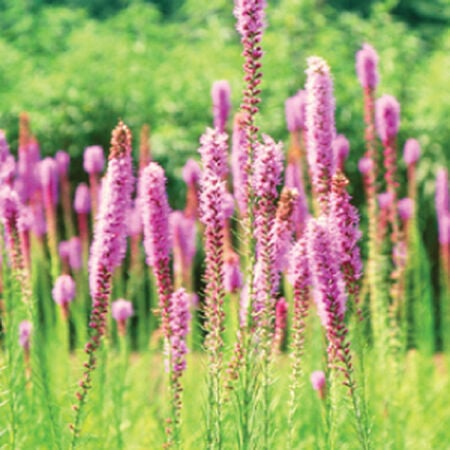Prairie Blazing Star, Liatris Seeds
Out of Stock
Key Attributes
Key Attributes
Product Details
Weight
0.01Depth
0.1Height
4.5Width
3.25Plant Height
2-4'Botanical Name
Liatris spicataSeed Type
SeedAdditional Characteristics
Attracts Pollinators, Attracts BirdsSeeds Per Gram
300Seeds Per Pound
136,000Packet
100 SeedsSow Depth
1/2"Seeds Per Ounce
8,500Breed
Open-pollinatedSun
Full SunLife Cycle
PerennialSow Method
TransplantCategories
FlowersDays To Maturity (# Days)
75Components
Growing Instructions
![]() Learning Download: How to Grow Liatris
Learning Download: How to Grow Liatris
Liatris is a perennial that can reach up to 5 feet tall and typically bloom with purple flowers that attracts hummingbirds, bees and butterflies to the garden. It originates from the United States.
Before Planting: Add compost or fertilizer to the garden prior to planting.
Planting: Sow seeds outdoors in the fall eight weeks before the first frost. Sow seeds 1/4 inch deep and 12 inches apart.
Watering: Begin watering once spring arrives and water at the base of the plant.
Fertilizer: After the winter season and during Liatris’ first year f growth, use a balanced liquid fertilizer in the spring and in the summer.
Days to Maturity: Flowers will bloom in the second season.
Harvesting: To harvest as a cut flower, cut the Liatris when half of its blooms have already opened.
Tips: Liatris may need to be divided every few years to better its growth. Divisions should be made in the fall after the plants die back.
Shipping Schedule
Our Seed Promise
 "Agriculture and seeds" provide the basis upon which our lives depend. We must protect this foundation as a safe and genetically stable source for future generations. For the benefit of all farmers, gardeners and consumers who want an alternative, we pledge that we do not knowingly buy or sell genetically engineered seeds or plants.
"Agriculture and seeds" provide the basis upon which our lives depend. We must protect this foundation as a safe and genetically stable source for future generations. For the benefit of all farmers, gardeners and consumers who want an alternative, we pledge that we do not knowingly buy or sell genetically engineered seeds or plants.
The mechanical transfer of genetic material outside of natural reproductive methods and between genera, families or kingdoms, poses great biological risks as well as economic, political, and cultural threats. We feel that genetically engineered varieties have been insufficiently tested prior to public release. More research and testing is necessary to further assess the potential risks of genetically engineered seeds. Further, we wish to support agricultural progress that leads to healthier soils, to genetically diverse agricultural ecosystems, and ultimately to healthy people and communities.
To learn more about the "Safe Seed Pledge" please visit www.councilforresponsiblegenetics.org.

